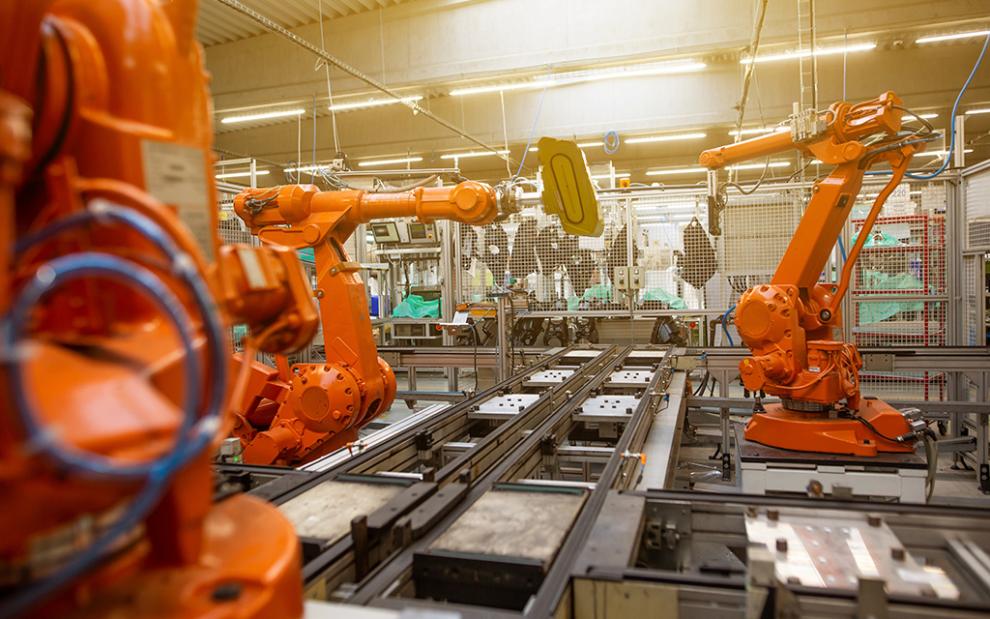Despite long-held fears among workers, automation does not simply, by virtue of its inherent nature, ‘threaten’ jobs. Nor do jobs carry inherent irreducible characteristics that render them automatable. Different attempts at classifying ‘at risk’ occupations have, unsurprisingly, come to wildly different conclusions.

Workers are not passive recipients of technology change; they also react to it. The history of technology change is replete with job roles that have proven unexpectedly resistant to elimination by automating technology. The recent experiences of digital technology and AI rollouts make it clear that human roles constantly emerge to augment technology that rarely works quite as well as anticipated.
In the context of Industry 5.0, we lack understanding of precisely what managers and organisations need to do to better to leverage benefits from interaction between human workers and technology resources, as well as the importance of distributed decision making for taking the best advantage of digital technology.
TWI is working as part of the Up-Skill project to understand the strategic, social, economic, and business contexts in which it does or does not make business sense to automate skilled, artisanal and craft roles.
As manufacturing becomes more complex and collaborative, there will be a growing need for workers with a range of skills, including problem-solving, critical thinking, creativity, and emotional intelligence. The Up-Skill project has identified and aims to address some important implications related to skilled work:
- Greater demand for workers with STEM skills: As technology continues to play an increasingly important role in manufacturing, there will be a growing demand for workers with skills in science, technology, engineering, and mathematics (STEM). These workers will be needed to design, develop, and maintain the advanced technologies that underpin Industry 5.0.
- Increased need for workers with soft skills: While technological skills will be important in Industry 5.0, there will also be a growing need for workers with soft skills, such as communication, teamwork, and adaptability. These skills will be important for employees to collaborate effectively with machines and with other workers, and to respond to the changing demands of the workplace.
- Greater emphasis on continuous learning: With the pace of technological change accelerating, workers in Industry 5.0 will need to be prepared to continuously learn and adapt to new technologies and processes. Companies will need to invest in training and development programmes to ensure that workers have the skills and knowledge needed to keep up with the changing demands of the workplace.
Before the introduction of automation systems in a skilled crafts environment, both the organisation and the managers require a certain level of skill to both communicate and implement the new approach. Therefore, there is a need to carefully audit all the requisites at organisational and managerial level for the specific level of automation that will be implemented.
This will provide the specific guidelines that can be used for the introduction of Industry 5.0 to the European manufacturing sector. These guidelines will allow us to verify our claims and, potentially, quantify the expected benefits for a better value proposition and establish a willingness to pay for the pathways. This will enable the Up-Skill project’s ideas to be implemented by as many European companies as possible.
It is important to keep skilled workers in employment for the improvement of their lives and the economy, in accordance with SDG#8 Decent Work and Economic Growth . The successful future of Industry 5.0, therefore, relies on the training of both workers and management so that the benefits of Industry 5.0 are achieved, ensuring there is a place for skilled crafts within manufacturing whilst maintaining production competences such as high throughput, quality, and product consistency.
Up-Skill will have wide-reaching impacts that directly affect the evolution of Industry 5.0 and its implications for future work and, in turn, European and worldwide industries and policy. The project will develop a quantified, predictive approach to the implementation of Industry 5.0 principles within the manufacturing industry, tailored to particular companies and local contexts. This will be done through the:
- Identification of skills that existing workers will need to survive in the emerging digitised workplace and the creation of training courses and manuals for hardware and software up-skilling.
- Development of the Up-Skill platform, including a data repository and decision support system (DSS) that will store compiled research data and convert it into information that can be utilised by businesses for technological integration and decision making.
- Cost savings in primary manufacturing through the efficient implementation of human-machine augmentation.
- Improved quality of output and productivity by addressing production methods, development cycles of new products and the reproducibility of products in conjunction with the artisanal skills needed for certain specifications.
- Waste reduction by enabling higher levels of reproducibility, defining specification tolerances and the use of software to make more efficient use of components that may have otherwise been unutilised.
- Longevity of demand for skilled labour and craftmanship through enabling better quantification of the added value provided by skilled workers via a reference framework which can be used to understand and express employee value across all levels of the business.
As such, the Up-Skill project will seek to demonstrate how Industry 5.0 will improve rather than seek to replace the output of workers in line with new technological developments. This is particularly relevant for a skilled craft environment where human workers can be employed to deliver added benefits for customers that require an ever-increasing level of product personalisation.